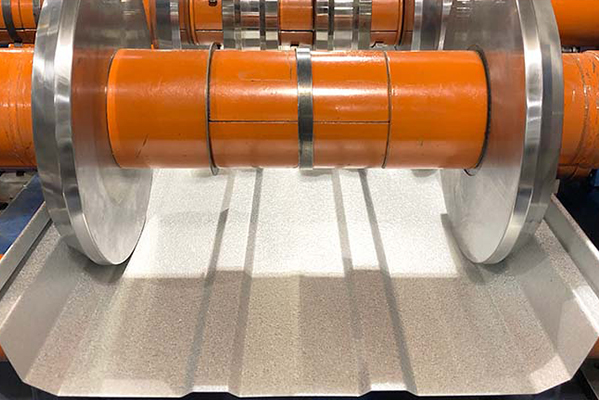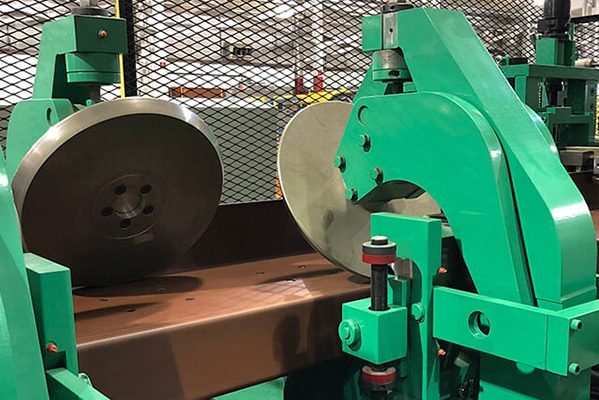Navigation Menu
Contact Us
- Email:
- info@wxavatar.com
- Address:
- Yurong Village, Yuqi Street, Huishan District, Wuxi, China.
Release Date:Mar 28, 2025 Visit:42 Source:Roll Forming Machine Factory
Portable roll forming machines offer significant advantages in metal fabrication, but they also present various hazards that operators must recognize and mitigate. Without proper safety precautions, these machines can cause severe injuries, equipment damage, and workplace accidents. This article explores the key hazards associated with portable roll forming machines and provides recommendations for safe operation.
1. Mechanical Hazards Pinch Points and Crushing Injuries The rollers and feeding mechanisms in portable roll formers create pinch points where operators' hands, fingers, or clothing can get caught, leading to: • Crushed or amputated fingers
• Entanglement injuries from loose clothing or jewelry
• Arm or hand fractures if limbs are pulled into moving parts Shearing and Cutting Risks Many portable roll formers include cutting systems (hydraulic, pneumatic, or manual), which pose:
• Severe laceration hazards from sharp edges
• Unexpected blade movement if safety guards are missing
• Flying metal debris during cutting
2. Electrical Hazards Portable roll formers often run on electrical power, creating risks such as:
• Electric shocks from damaged wiring or improper grounding
• Short circuits due to exposure to moisture or metal dust
• Fire hazards from overheating motors or electrical faults
3. Ergonomic and Manual Handling Risks Since these machines are portable, workers frequently move and adjust them, leading to:
• Musculoskeletal injuries from lifting heavy rollers or coils
• Strains and sprains from awkward postures during operation
• Fatigue-related accidents due to repetitive motions

4. Material-Related Hazards Sharp Metal Edges and Burrs Freshly formed metal sheets often have:
• Sharp edges that can cause cuts
• Burrs or metal slivers that may puncture skin Flying Metal Chips and Debris During cutting or forming, small metal fragments can:
• Fly into eyes (requiring safety goggles)
• Cause skin irritation (especially with galvanized or coated metals)
5. Noise and Vibration Exposure Portable roll forming machines generate:
• High noise levels (potentially exceeding OSHA limits), leading to hearing loss
• Hand-arm vibration from prolonged operation, increasing the risk of nerve damage
6. Improper Setup and Stability Risks Since these machines are mobile, improper setup can lead to:
• Tip-over accidents if not secured on uneven ground
• Misalignment of rollers, causing jams or defective products
• Unintended machine movement if brakes or locking mechanisms fail
7. Lack of Training and Human Error Many accidents occur due to:
• Untrained operators who misuse controls
• Bypassing safety features (e.g., removing guards for convenience)
• Fatigue or distraction, leading to mishandling Safety Measures to Mitigate Hazards To minimize risks,

workplaces should implement:
✔ Machine Guards – Install physical barriers around pinch points and cutting zones.
✔ Lockout/Tagout (LOTO) – Ensure machines are de-energized during maintenance.
✔ Personal Protective Equipment (PPE) – Require gloves, safety glasses, hearing protection, and steel-toe boots.
✔ Proper Training – Train operators on safe handling, emergency stops, and hazard recognition.
✔ Regular Maintenance – Inspect electrical systems, rollers, and blades for wear and damage.
✔ Stable Setup – Ensure the machine is on a level surface and securely locked before operation.
Conclusion
While portable roll forming machines improve efficiency and flexibility in metal fabrication, they also introduce significant hazards if not used correctly. By understanding these risks—including mechanical, electrical, ergonomic, and material-related dangers—employers and operators can take proactive steps to enhance workplace safety. Proper training, maintenance, and adherence to safety protocols are essential to preventing accidents and ensuring smooth, injury-free operations.
A safe workplace starts with awareness—always prioritize safety when operating portable roll forming machines!